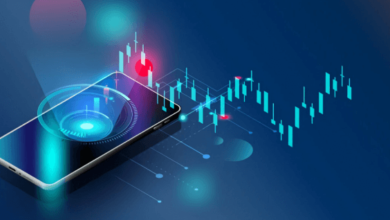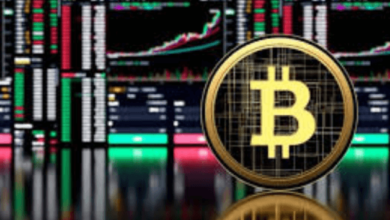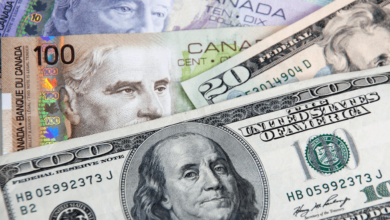Understanding the 1700 Euro In USD Conversion: Currency Seas

In today’s dynamic financial landscape, understanding currency This article delves into the intricate world of the 1700 euro in usd conversion, exploring its historical context, current dynamics, and future trends.
I. Introduction
A. Brief Overview of Currency Exchange Rates
The global economy, influencing international trade, investments, and travel. The Euro and the USD stand out as major players among the myriad of currencies.
B. Significance of Understanding the 1700 Euro in USD Conversion
As two of the world’s most traded currencies, the Euro and the USD hold a special place in the financial realm. Knowledge of their conversion rates is essential for making informed decisions in various economic sectors.
C. Current Financial Landscape
Before delving into the specifics, let’s take a moment to glance at the current financial landscape. Markets are in constant flux, reacting to economic indicators, geopolitical events, and unforeseen circumstances.
II. Understanding the Euro
A. Historical Background of the Euro
The Euro, introduced in 1999, has become a symbol of European economic integration. Its inception marked a significant shift in the financial dynamics of the region.
B. Euro as a Major Global Currency
Today, the Euro is not only the official currency of the Eurozone but also a key player in international transactions. Its widespread use reflects the economic strength of the Eurozone countries.
C. Factors Influencing Euro Value
Various factors impact the value of the Euro, including economic indicators, political stability, and monetary policies. Understanding these factors is crucial for predicting Euro to USD trends.
III. The USD and Its Dynamics
A. Role of the USD in International Trade
The USD, often referred to as the world’s primary reserve currency, plays a vital role in global trade. Its dominance stems from the economic power of the United States.
B. Factors Affecting the USD Value
Similar to the Euro, the value of the USD is subject to numerous influences. Economic indicators, interest rates, and geopolitical events all contribute to the fluctuation of the USD.
C. Comparison with Other Major Currencies
A comparative analysis of the USD against other major currencies provides valuable insights into its strength and weaknesses on the global stage.
IV. Exchange Rates Explained
A. Mechanisms Behind Currency Exchange
Currency exchange is facilitated by a complex network of financial institutions, brokers, and electronic platforms. Exploring the mechanisms behind this process sheds light on how rates are determined.
B. Role of Central Banks in Currency Valuation
Their decisions impact exchange rates and, consequently, the global economy.
V. Euro to USD Conversion
A. Importance of Euro to USD Rate
The Euro to USD conversion rate holds significance for businesses engaging in cross-border trade, investors diversifying their portfolios, and travelers planning their expenses.
B. Real-Time Exchange Rate Tools
In the digital age, access to real-time exchange rate tools empowers individuals and businesses to make timely and informed decisions.
C. Historical Trends and Patterns
Analyzing historical trends and patterns in Euro to USD conversion provides valuable insights into potential future movements.
VI. Economic Impacts
A. Effects of Euro to USD Fluctuations on Global Markets
Fluctuations in the Euro to USD conversion rates have far-reaching effects on global markets, influencing the prices of commodities, stocks, and bonds.
B. Implications for Businesses and Consumers
Businesses engaged in international trade and consumers making cross-border transactions are directly impacted by changes in Euro to USD rates.
C. Strategies for Mitigating Currency Risks
Mitigating currency risks requires strategic planning. Businesses and investors can adopt various strategies to navigate the challenges posed by currency fluctuations.
VII. Investment Opportunities
A. How Currency Exchange Rates Impact Investments
Currency exchange rates can create both opportunities and risks for investors.
B. Potential Benefits of Investing in Euros or USD
Exploring the potential benefits of investing in Euros or USD sheds light on how currency-based investments can be integrated into diversified portfolios.
C. Risk Considerations for Currency-Based Investments
While opportunities exist, it’s essential to consider the associated risks when investing in currencies. A balanced approach is key to managing risk effectively.
VIII. Practical Tips for Currency Exchange
A. Best Practices for Individuals and Businesses
Whether you’re an individual traveler or a multinational corporation, adhering to best practices in currency exchange ensures optimal outcomes.
B. Timing Considerations for Exchanging Euros to USD
The timing of currency exchange can significantly impact the amount received. Understanding optimal times for conversion is a skill worth cultivating.
C. Fee Structures and Hidden Costs
Awareness of fee structures and hidden costs associated with currency exchange prevents unpleasant surprises and maximizes the value of the exchanged funds.
IX. Future Trends and Projections
A. Analyst Predictions for Euro to USD Trends
Financial analysts offer insights into the potential future trends of Euro to USD conversion rates. Examining these predictions aids in proactive decision-making.
B. Global Economic Factors Influencing Future Rates
Beyond currency-specific factors, global economic conditions play a role in shaping future Euro to USD trends. A holistic view is essential for accurate projections.
C. Potential Impact of Geopolitical Events
Geopolitical events, such as elections and trade agreements, can have a significant impact on currency values. Anticipating these events is crucial for risk management.
X. Case Studies
A. Examining Historical Cases of Euro to USD Fluctuations
Learning from historical cases provides valuable lessons for investors and businesses navigating the uncertainties of currency markets.
B. Learning from Currency Market Trends
Studying broader currency market trends contributes to a comprehensive understanding of the factors influencing Euro to USD conversion.
C. Lessons for Investors and Businesses
Applying lessons learned from historical cases and market trends enhances the ability of investors and businesses to make informed decisions.
XI. Common Misconceptions
A. Addressing Myths About Euro to USD Conversion
Dispelling common myths and misconceptions promotes accurate understanding and informed decision-making among individuals and businesses.
B. Clarifying Common Misunderstandings
Clarifying misunderstandings surrounding Euro to USD conversion fosters a more transparent and accessible financial environment.
C. Enhancing Public Awareness
Raising awareness about currency exchange processes and debunking misconceptions contributes to a financially literate society.
XII. Expert Interviews
A. Insights from Financial Analysts
Interviews with financial analysts provide valuable perspectives on current market conditions and future trends in Euro to USD conversion.
B. Tips from Currency Market Experts
Seasoned experts in the currency market share tips and strategies for navigating the complexities of Euro to USD conversion.
C. Expert Opinions on Future Currency Trends
Experts weigh in on their predictions for future currency trends, offering valuable insights for businesses and investors. Read more…
XIII. Conclusion
A. Recap of Key Points
In conclusion, a thorough understanding of the 1700 Euro in USD conversion is vital in today’s interconnected global economy.
B. Encouragement for Informed Financial Decisions
Empowered with knowledge, individuals and businesses can make informed financial decisions that align with their goals and risk tolerance.
C. Final Thoughts on the Euro to USD Relationship
The Euro to USD relationship is a dynamic interplay of economic forces, and staying informed is the key to navigating the currency seas successfully.
FAQs
- Q: How often do 1700 Euro in USD conversion rates change?
- A: Conversion rates can fluctuate throughout the day due to market demand and supply. Real-time tools provide the latest information.
- Q: Are there any risks associated with currency-based investments?
- A: Yes, currency investments carry risks. It’s crucial to assess these risks and adopt strategies to mitigate them.
- Q: Can individuals influence Euro to USD conversion rates?
- A: While individual actions may not directly influence rates, collective market behaviors can have an impact.
- Q: What role do central banks play in currency valuation?
- A: Central banks use monetary policies to influence currency value, aiming to achieve economic stability.
- Q: How can businesses hedge against currency risks?
- A: Businesses can hedge against currency risks by using financial instruments like forward contracts and options.






